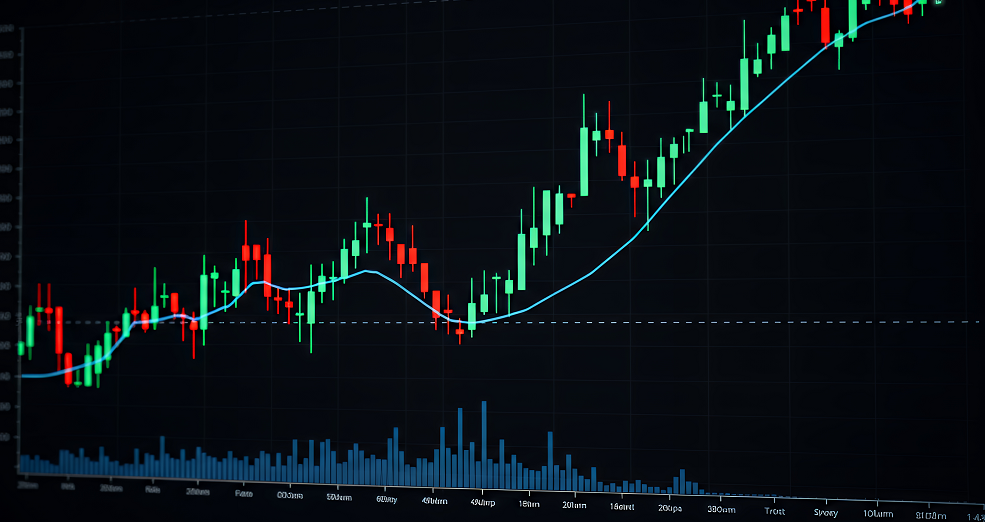IC Markets – Asia Fundamental Forecast | 30 October 2025
What happened in the U.S. session?
The U.S. trading session was characterized by record-breaking equity performance fueled by major technology sector developments, positive U.S.-China trade framework progress, and strong corporate earnings that exceeded expectations. The Microsoft-OpenAI restructuring and Nvidia-Nokia partnership announcements catalyzed significant gains in tech megacaps, pushing the S&P 500 above 6,800 and the Nasdaq to new highs..
What does it mean for the Asia Session?
Thursday’s Asian session centers on the Bank of Japan’s policy decision and Tokyo CPI data, both critical for yen direction and regional market sentiment. The ECB meeting and European inflation/GDP data will drive EUR crosses, while the Australian dollar’s strength following hot inflation data positions it as an outperformer. Record highs in Japanese and South Korean equities face tests from central bank decisions, while gold’s rebound and cryptocurrency weakness add to market complexity. Traders should monitor central bank commentary closely, as tone and forward guidance will be more market-moving than the expected policy holds.
The Dollar Index (DXY)
Key news events today
No major news event
What can we expect from DXY today?
The US dollar demonstrated resilience, supported by Fed Chair Powell’s cautious stance on future rate cuts and optimism surrounding the US-China trade framework agreement. While the Fed delivered an expected 25 basis point cut, Powell’s message that December action is “not a foregone conclusion” provided a hawkish counterbalance. The breakthrough in US-China trade negotiations ahead of the Trump-Xi summit removed the threat of devastating 100% tariffs, boosting risk sentiment while preventing further dollar weakness.
Central Bank Notes:
- The Federal Open Market Committee (FOMC) voted, by majority, to lower the federal funds rate target range by 25 basis points to 3.75%–4.00% at its October 28–29, 2025, meeting, marking the second consecutive cut following the 25 basis points reduction in September.
- The Committee maintained its long-term objectives of maximum employment and 2% inflation, noting that the labor market continues to soften, with modest job creation and an unemployment rate edging higher. In comparison, inflation remains above target at around 3.0%.
- Policymakers highlighted ongoing downside risks to economic growth, tempered by signs of resilient economic activity. September’s consumer price index (CPI) came in slightly lower than expected at 3.0% year-over-year, easing inflation pressure but still warranting vigilance given tariff-driven price effects.
- Economic activity expanded modestly in the third quarter, with GDP growth estimates around 1.0% annualized; however, uncertainty remains elevated amid persistent global trade tensions and the U.S. government shutdown, which is impacting data availability.
- The updated Summary of Economic Projections reflects an anticipated unemployment rate averaging approximately 4.5% for 2025, with headline and core personal consumption expenditures (PCE) inflation projections holding near 3.0%, indicating a slow easing path ahead.
- The Committee emphasized its flexible, data-dependent approach and underscored that future policy adjustments will be guided by incoming labor market and inflation data. As in prior meetings, there was dissent, including one member advocating a more aggressive 50-basis-point cut.
- The FOMC announced the planned conclusion of its balance sheet reduction (quantitative tightening) program, intending to cease runoff in the near term to maintain market stability, with Treasury redemption caps held steady at $5 billion per month and agency mortgage-backed securities caps at $35 billion.
- The next meeting is scheduled for 9 to 10 December 2025.
Next 24 Hours Bias
Weak Bearish
Gold (XAU)
Key news events today
No major news event
What can we expect from Gold today?
Gold prices on Thursday are stabilizing around $4,000-$4,020 per ounce after volatile trading throughout late October. The precious metal faces a critical juncture as multiple factors converge: reduced safe-haven demand from improving US-China trade relations, widely anticipated Fed rate cuts supporting non-yielding assets, and key central bank meetings from both the BOJ and ECB. While short-term technical indicators suggest potential for further consolidation between $3,900-$4,100, the long-term outlook remains constructive given persistent central bank accumulation, elevated geopolitical uncertainty, and expectations of continued monetary easing from major economies.
Next 24 Hours Bias
Medium Bearish
The Australian Dollar (AUD)
Key news events today
No major news event
What can we expect from AUD today?
The Australian dollar is experiencing its strongest performance in three weeks, driven primarily by unexpectedly hot inflation data that has crushed near-term RBA rate cut expectations. The quarterly CPI jumping to 3.2% (from 2.1%) and trimmed mean inflation surging to 3.0% has prompted a hawkish reassessment of RBA policy, with markets now pricing in less than a 10% chance of a November rate cut. This stands in stark contrast to the dovish Federal Reserve, which delivered its second consecutive 25 basis point cut, creating favorable interest rate differentials for the AUD.
Central Bank Notes:
- The RBA held its cash rate steady at 3.60% at its October meeting on 29–30 September 2025, marking a second consecutive pause after August’s 25 basis point cut. The move affirms the Bank’s data-dependent approach as inflation trends within the target range.
- Inflation indicators remained stable through September, with headline CPI likely anchoring near 2.2%—comfortably within the 2–3% band. Insurance and housing costs remain sticky but are increasingly offset by moderation in discretionary goods.
- Trimmed mean inflation is estimated at around 2.8%, signaling underlying pressures remain contained. The Board continues to flag food and energy price volatility as short-term risks, though the broader disinflation narrative holds.
- Global conditions remain a source of uncertainty. U.S. policy expectations and uneven growth in China continue to weigh on commodities, even as trade disruptions have eased marginally since mid-year.
- Domestic growth shows resilience in the housing and services sectors, though manufacturing remains subdued. Household incomes have stabilized, but consumption remains only modest, capped by high borrowing costs.
- The labor market maintains relative tightness, though job growth has slowed notably since the first half of the year. Underutilization has ticked higher, but overall employment conditions remain supportive.
- Wage growth is plateauing, reflecting softer labor demand. Weak productivity continues to keep unit labor costs elevated, underscoring a medium-term concern highlighted repeatedly by the RBA.
- Household consumption prospects remain fragile. The combination of high rents and weak discretionary appetite suggests risks of a consumer-led slowdown in Q4 if confidence fails to rebound.
- The Board reiterated that subdued household spending poses risks to business sentiment and may dampen investment and job creation in the coming quarters.
- Monetary policy remains mildly restrictive. The RBA balanced confidence in inflation progress with caution around global and domestic demand risks, keeping further adjustments conditional on incoming data.
- The Bank reaffirmed its dual commitment to price stability and full employment, noting its readiness to act should conditions shift markedly.
- The next meeting is on 5 to 6 November 2025.
Next 24 Hours Bias
Medium Bullish
The Kiwi Dollar (NZD)
Key news events today
No major news event
What can we expect from NZD today?
The New Zealand Dollar is supported by optimism surrounding potential US-China trade de-escalation ahead of today’s Trump-Xi meeting and expectations of further Fed rate cuts. However, gains remain capped by domestic economic weakness, recent aggressive RBNZ easing, and elevated inflation. The Kiwi faces critical technical resistance around 0.5800, with near-term direction likely determined by the outcomes of both the Fed meeting and the Trump-Xi summit.
Central Bank Notes:
- The Monetary Policy Committee (MPC) agreed to cut the Official Cash Rate (OCR) by 50 basis points to 2.50% on 8 October 2025, exceeding market expectations for a smaller 25-basis-point reduction and signaling a stronger commitment to reviving growth.
- The decision was reached by consensus, marking a shift from previous split votes, and reflected policymakers’ shared view that sustained economic weakness and persistent disinflationary pressures required a more front-loaded policy response.
- Annual consumer price inflation stood at 2.7% in the June quarter and is seen nearing 3% for the September quarter—above the 2% midpoint but within the 1–3% target range. Despite high near-term readings, the MPC projects inflation will return toward 2% by the first half of 2026 as spare capacity and moderating tradables curb price momentum.
- Policymakers acknowledged that domestic demand remains weak, with household spending, business investment, and construction activity under pressure. While still elevated, services inflation is expected to ease gradually as wage growth slows and unemployment edges higher.
- Financial conditions have eased with expectations as wholesale and retail borrowing rates adjust to lower policy settings. Bank lending data indicate a modest uptick in mortgage approvals, though broader credit demand remains subdued.
- GDP growth stalled in the middle of 2025, with high-frequency indicators showing continued weakness into the third quarter. A combination of elevated costs for essentials and falling savings continues to restrain household consumption, while global trade frictions weigh on business sentiment.
- The MPC noted that global uncertainty—particularly from US trade regulation changes and soft Chinese demand—continues to pose downside risks to export sectors, though these are partly offset by a weaker New Zealand dollar improving competitiveness.
- Subject to data confirming a sustained soft patch in activity and moderating inflation pressures, the MPC signaled further scope to reduce the OCR toward 2.25% at its next meeting on 26 November 2025, consistent with current market and Westpac forecasts.
- The next meeting is on 26 November 2025.
Next 24 Hours Bias
Weak Bullish
The Japanese Yen (JPY)
Key news events today
BOJ policy rate (Tentative)
Monetary policy statement (Tentative)
BOJ outlook report (Tentative)
BOJ press conference (Tentative)
Tokyo core CPI y/y (11:30 pm GMT)
What can we expect from JPY today?
The Japanese yen strengthened ahead of the BOJ’s policy decision, driven by several key factors: US Treasury Secretary Bessent’s public pressure on Japan to allow BOJ policy independence; political clarity as Prime Minister Takaichi adopted a more neutral stance on monetary policy despite her stimulus-oriented fiscal plans; and inflation data remaining persistently above the BOJ’s 2% target at 2.9%. While the BOJ is expected to hold rates at 0.5% on October 30, growing hawkish sentiment within the policy board—evidenced by two dissenting votes in September—signals that a rate hike could come as soon as December 2025.
Central Bank Notes:
- The Policy Board of the Bank of Japan met on 30–31 October and by a clear majority vote, decided to maintain its key monetary policy approach for the upcoming period.
- The BOJ will continue to encourage the uncollateralized overnight call rate to remain at around 0.5%, in line with the prior stance.
- The gradual quarterly reduction in monthly outright purchases of Japanese Government Bonds (JGBs) remains intact, with amounts unchanged from the previous schedule. Purchases are set to decrease by about ¥400 billion per quarter through March 2026, shifting to about ¥200 billion per quarter from April to June 2026, and targeting a ¥2 trillion purchase level for Q1 2027. The bank reaffirmed its intention to maintain flexibility, with readiness to respond if market conditions warrant an adjustment.
- Japan’s economy continues to show moderate recovery, primarily led by solid capital expenditures, although export growth and corporate activity remain restrained by external demand uncertainty and the ongoing effects of U.S. trade policies.
- Annual headline inflation (excluding fresh food) accelerated to 2.9% year-on-year in September, marking the first uptick in four months and staying above the BOJ’s 2% target. Broad-based inflation persists, with food and energy cost pressures, but wage growth continues to support household consumption. Input cost pressures from the earlier surge in imports eased slightly.
- Short-term inflation momentum could moderate as food-price hikes ease, though rent, healthcare, and service-sector price increases tied to labor shortages provide support. Firms and households maintain a gradual upward drift in inflation expectations.
- For the near term, BOJ projects growth below trend as external demand stays subdued and corporate investment plans remain cautious. Still, accommodative financial conditions and steady gains in real labor income will underpin domestic consumption.
- Over the medium term, as overseas economies recover and trade conditions normalize, Japan’s growth potential should improve. Persistent labor market tightness, higher wage settlements, and rising medium- to long-term inflation expectations are expected to keep core inflation on a gradual upward trajectory, converging toward the 2% price stability target later in the forecast horizon.
- The next meeting is scheduled for 18 to 19 December 2025.
Next 24 Hours Bias
weak Bearish
Oil
Key news events today
No major news event
What can we expect from Oil today?
Oil prices climbed modestly as a much-larger-than-expected drop in U.S. crude inventories temporarily relieved oversupply concerns that had dominated recent weeks. The market remains cautious, with supply expected to exceed demand for the coming months, and geopolitical risks—particularly sanctions on Russia—adding uncertainty to global oil flows.
Next 24 Hours Bias
Medium Bearish





